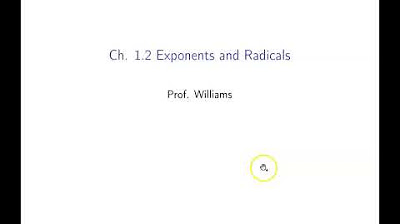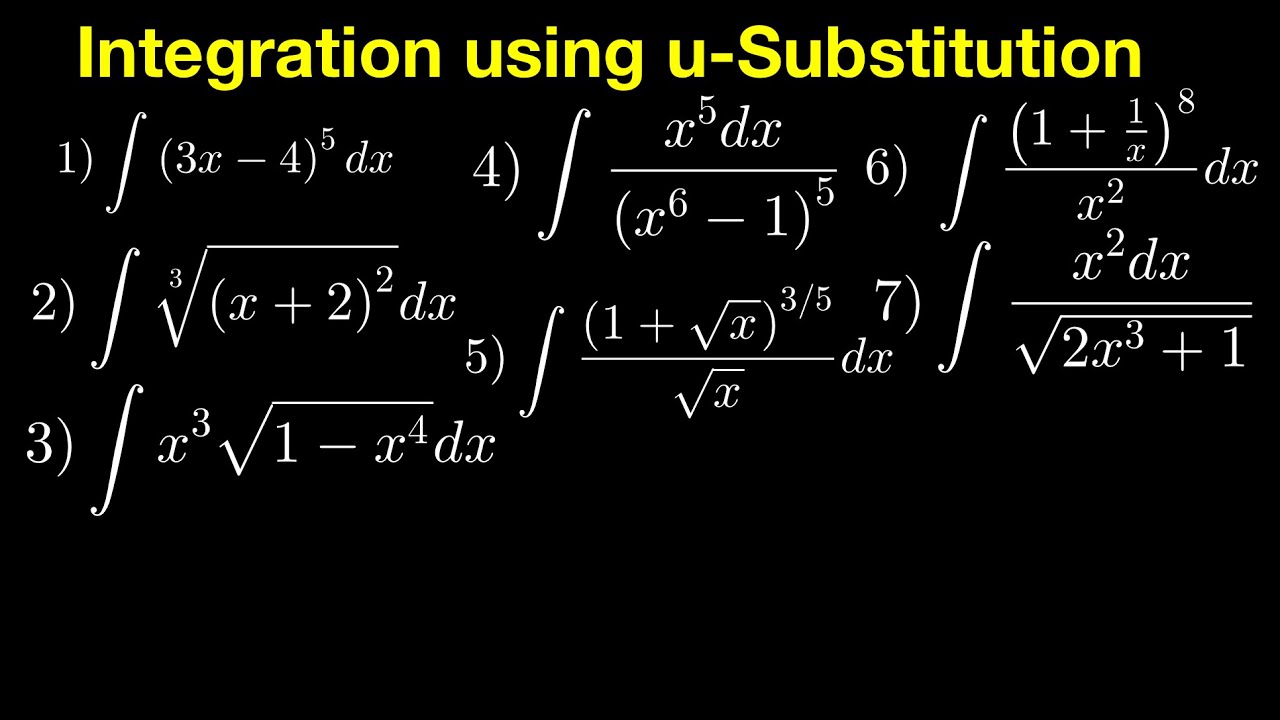Infinite Limits With Radicals
TLDRIn this educational video, the host discusses infinite limits involving radicals, guiding viewers through various examples. The emphasis is on understanding when to apply the absolute value in simplifying expressions with radicals. The video clarifies common misconceptions, such as the need for absolute value with higher powers of radicals, and demonstrates how to simplify expressions like √(x^6)/2x^3 correctly, resulting in ±√3/2. The host's approach is to simplify complex concepts, ensuring students grasp the nuances of handling infinite limits with radicals.
Takeaways
- 📚 The video discusses infinite limits involving radicals and provides a step-by-step explanation.
- 🔑 The square root of x squared simplifies to the absolute value of x, which is important for understanding limits.
- 📉 When dealing with infinite limits, the negative part of the absolute value is often disregarded due to the domain of x being positive.
- 🤔 Students often get confused with the concept of absolute value in the context of infinite limits and radicals.
- 🌟 The video emphasizes that the square root of x squared to any even power will always yield a positive result, eliminating the need for absolute value.
- 🔢 In the example, the limit of √x/√9 as x approaches infinity simplifies to positive 3/2 due to the domain of x being positive.
- 🚫 The video clarifies that for odd powers, the absolute value is necessary because negative inputs can affect the result.
- 🧩 The square root of x to the fourth power simplifies to x squared, and the limit of √16/√(x^4) as x approaches infinity is 1, regardless of the domain.
- 🔄 The last example shows the importance of considering the domain when simplifying expressions involving radicals and absolute values.
- 📌 The final takeaway is to be cautious with radicals, knowing when to use absolute value and when it's not necessary for simplifying expressions.
Q & A
What is the first concept discussed in the video regarding infinite limits and radicals?
-The first concept discussed is the simplification of the square root of x squared to the absolute value of x, and the square root of 9 to 3, emphasizing that for infinite limits, only positive values are considered due to the domain being all positive values of x.
Why is the absolute value important when dealing with radicals in the context of the video?
-The absolute value is important because it accounts for both positive and negative solutions of x, which is necessary when the domain includes negative values of x, as it ensures the result is always positive.
What is the result of the first example problem in the video?
-The result of the first example problem is 3/2, after simplifying the expression using the properties of absolute values and the domain of positive x values.
Why does the video mention that students often get confused with certain types of problems?
-Students often get confused because they might not correctly apply the concept of absolute value or might misinterpret the behavior of radicals when the domain changes, leading to incorrect conclusions about the limit.
What happens when the square root of x squared is raised to the fourth power in the video?
-When the square root of x squared is raised to the fourth power, it simplifies to x squared, and there is no need for absolute value because the result is always positive regardless of the sign of x.
How does the video explain the difference between the square root of x squared and x squared?
-The video explains that the square root of x squared simplifies to the absolute value of x, which can be positive or negative, while x squared is always positive and does not require absolute value.
What is the result of the second example problem in the video?
-The result of the second example problem is 1, after simplifying the expression and considering that the domain approaches negative infinity, which does not affect the positivity of the result.
Why is the absolute value necessary in the last example problem discussed in the video?
-The absolute value is necessary in the last example because the domain includes negative x values, and the expression involves x to the third power, which can be negative, so the absolute value ensures the result is positive.
What is the final result of the last example problem in the video?
-The final result of the last example problem is negative square root of 3 over 2, after simplifying the expression and considering the absolute value of x cubed.
What advice does the video give regarding the use of absolute value with radicals?
-The video advises to be careful with the use of absolute value with radicals, ensuring it is applied correctly based on the domain of x and the behavior of the expression, to avoid incorrect conclusions about the limit.
Outlines
📚 Understanding Infinite Limits with Radicals
This paragraph introduces the topic of infinite limits in the context of radicals. The speaker explains the process of solving the first example, emphasizing the importance of considering the domain and the absolute value of x when dealing with square roots. The solution involves simplifying the expression \( \sqrt{x^2}/2x \) to \( \frac{3}{2} \), given that the domain only includes positive values of x. The speaker also addresses common misconceptions about the behavior of radicals and absolute values, illustrating how they can lead to confusion in determining the correct limit.
Mindmap
Keywords
💡Infinite Limits
💡Radicals
💡Absolute Value
💡Square Root of x Squared
💡Domain
💡Positive Values
💡Square Root of 9
💡X to the Second
💡Square Root of x to the Fourth
💡X to the Sixth
💡Simplify
Highlights
Introduction to the concept of infinite limits with radicals.
Shortcut for square root of x squared is the absolute value of x.
Explanation of the square root of 9 being equal to 3 in the context of infinite limits.
Clarification on ignoring the negative solution for the domain of positive values of x.
Simplification of √x²/2x to 3/2x using the domain's constraint.
Discussion on the confusion around infinite limits with radicals.
Demonstration of the square root of x squared resulting in x, with an emphasis on absolute value.
Illustration of the difference between putting -1 into the square root of x squared and the square root of x to the fourth.
Explanation of not needing absolute value when dealing with higher powers like x to the second.
Simplification of √16/√x⁴ to 1, highlighting the irrelevance of domain in this case.
Introduction of the last example involving x to the sixth.
Clarification on the need for absolute value when dealing with negative values in the domain.
Simplification of √x⁶ to x³ and the consideration of absolute value for negative x values.
Final simplification of the last example to √3/2 or -√3/2, emphasizing the importance of domain.
Advice on being careful with radicals and when to use absolute value.
Closing remarks encouraging students and signaling the end of the video.
Transcripts
5.0 / 5 (0 votes)
Thanks for rating:





